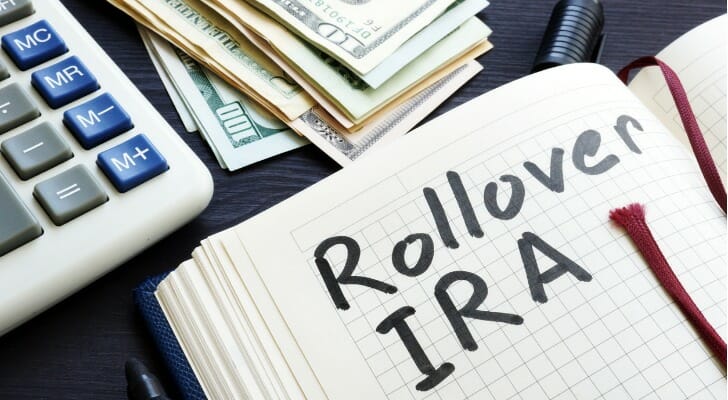Rolling over a pension into an IRA can provide greater control over your retirement funds, offering a wider range of investment options and potentially lower fees. The process typically involves contacting your pension plan administrator, selecting an IRA provider, and ensuring the transfer complies with IRS regulations to avoid taxes or penalties. Consulting a financial advisor may also help you tailor the rollover to your financial goals and retirement timeline.
Before you do anything, though, consider consulting a financial advisor about your questions.
History of Pension Plans
During the 1980s, 60% of private-sector companies offered their workers traditional pension plans, which were usually defined benefit plans. As the years have passed, fewer employers are offering these types of retirement plans. For example, Department of Labor records show that there were 173,000 private defined benefit pensions in 1986. By 2022, that number fell to fewer than 47,000.
Furthermore, only 15% of private workers have access to defined benefit plans, according to the Bureau of Labor Statistics.
As private-sector companies have discontinued their traditional pension plans, they have encouraged workers to launch a pension rollover to an IRA. Some have replaced the defined benefit plan with a 401(k), a defined contribution plan. They have encouraged their workers to either roll over their pension money to the new 401(k) or initiate a pension rollover to an IRA.
Defined Benefit Pension Rollover to an IRA: Is It Possible?
The short answer to this question is yes or more accurately, usually. Some states have switched from defined benefit pensions to 401(k) plans for their public school teachers and do not allow a pension rollover to an IRA. However, for most people, this type of pension rollover is possible and often encouraged by their employer, particularly if they are closing out their defined benefit plan.
Two conditions must be met for you to roll over your pension to an IRA. The first is that the pension plan you are currently under must be a “qualified employee plan” that conforms to Internal Revenue Service (IRS) rules. If your contributions to the plan have been tax-deferred, then the chance is good that it is.
The second condition is that you must be leaving the company, through either retirement or other circumstances, or your company must be closing its pension plan. To be safe, contact your plan administrator before you initiate any transfer of funds.
What to Consider Before a Pension Rollover to an IRA

According to the IRS, you can roll over a qualified pension plan to any type of retirement account. But, even if your rollover meets the considerations of being a qualified plan and if you are leaving the company or the company is closing its pension plan, there are other factors you should consider when deciding whether to roll over your pension plan to an IRA.
First, you generally have a wider variety of investment options in an IRA than in a company pension plan. You can choose your own investments, taking into consideration your individual risk tolerance, investment goals and time horizon. Types of investments would include stocks, bonds and mutual funds, but you’re not limited to just those.
When do you plan to retire? Under a company pension plan, you can take a penalty-free distribution from your retirement account if you leave or lose your job at age 55 or later. If you do a pension rollover to an IRA, you will have to wait until you are 59 ½ to take a penalty-free distribution. The penalty is 10% if you take a distribution before 59 ½. However, there are exceptions to this rule. For example, early withdrawals can be taken from qualified retirement plans to cover unreimbursed medical expenses that exceed 7.5% of your adjusted gross income (AGI).
You can avoid paying taxes on the rollover if your pension is going to a traditional IRA. You only pay taxes when you make a withdrawal if the withdrawal is going to the traditional IRA. This is different for a Roth IRA. If you set up a Roth IRA, you pay taxes when the pension is rolled over. Many traditional pension plans allow you to take out a loan if you need to for up to 50% of the value of your pension. This option is not available when you roll over your pension into an IRA.
Funds in a traditional pension plan are safe from creditors in the event of financial hardship or even bankruptcy. Your IRA, or at least a portion of it, can be seized in the case of bankruptcy. Check your individual state governments to see what their rules are regarding how much of your IRA can be confiscated.
Does the company pension plan include the distribution of the company’s stock? Some plans include company stock and some don’t. If your plan does include company stock, you may want to wait until you are retired and in a lower tax bracket, to take a distribution.
Should you take this distribution of company stock before age 59 ½, you pay taxes on your distribution at the ordinary tax rate plus a 10% penalty. If you are 59 ½ years old when you take this distribution, you won’t pay the 10% penalty. You will pay taxes at your ordinary rate on a cost basis and long-term capital gains taxes on the rest of the appreciation when the stock is sold.
Can You Still Work After Rolling Over a Pension to an IRA?
Rolling over a pension into an IRA can give you more control over your retirement savings, but the process requires careful planning to avoid taxes and penalties. The first step is to contact your pension plan administrator to confirm whether your payout is eligible for a rollover and to understand your distribution options. Most traditional pensions allow you to choose between receiving a lump-sum payout or monthly annuity payments, and only the lump sum can be rolled into an IRA.
Once you elect the lump-sum option, choosing a direct rollover is the most tax-efficient way to move the funds. In a direct rollover, the pension plan transfers the money straight to your IRA provider, ensuring the distribution isn’t treated as taxable income in the year you receive it. If you opt for an indirect rollover, where the funds are sent to you first, you’ll need to deposit the full amount into your IRA within 60 days to avoid taxes and potential penalties. Additionally, the plan is required to withhold 20% for federal taxes, which you must replace out of pocket to complete the rollover in full.
After the funds are successfully transferred, you can invest them according to your retirement goals, risk tolerance and time horizon. An IRA typically offers far more investment options than a traditional pension plan, giving you the flexibility to build a diversified portfolio. If you’re unsure which rollover method to choose or how to manage the investments afterward, a financial advisor can help guide your strategy and ensure the transition supports your long-term financial security.
Monthly Pension Payments vs. IRA Withdrawals
A traditional pension typically offers fixed monthly payments for life, which can provide stable income and reduce the risk of outliving your money. This can be particularly valuable if you expect a long retirement or want to avoid the responsibility of managing investments. Pension payments are usually backed by the employer or a government plan, and in some cases, they may offer survivor benefits for a spouse.
Rolling over a pension to an IRA gives you full ownership of the funds and more flexibility in how and when you access them. With an IRA, you can choose your investment strategy, set your own withdrawal schedule, and potentially grow the account over time. However, you assume the investment risk, and there’s no guaranteed monthly income unless you purchase an annuity or follow a structured withdrawal plan.
Deciding between a monthly pension and an IRA rollover often comes down to personal factors like risk tolerance, life expectancy and spending needs. If you prefer the predictability of a set income, the pension may be a better fit. If you value control and growth potential, and are comfortable managing the funds, then an IRA may offer more long-term advantages. Some retirees also split the difference by rolling over part of a lump sum and keeping a portion in the pension plan.
Bottom Line

Rolling over a pension into an IRA can open the door to greater flexibility, broader investment choices and more control over your retirement income. But to avoid unexpected taxes and penalties, it’s essential to follow IRS guidelines, choose the right rollover method and understand how the transition fits into your long-term financial plan. With careful planning, and guidance from a financial advisor, you can make the most of your pension benefits and build a retirement strategy that supports your goals well into the future.
Tips on Retirement Planning
- Tax and retirement issues are complex, especially when you’re thinking of rolling a pension into an IRA or 401(k). It would be wise to check with a financial advisor before doing anything. Finding a financial advisor doesn’t have to be hard. SmartAsset’s free tool matches you with vetted financial advisors who serve your area, and you can have a free introductory call with your advisor matches to decide which one you feel is right for you. If you’re ready to find an advisor who can help you achieve your financial goals, get started now.
- If you have a defined benefit plan and want to roll over your retirement funds to an IRA, you must follow the rules to keep from incurring unnecessary tax liability. There are also more factors you should consider. Use SmartAsset’s tax return calculator to see that a rollover should be a tax-neutral financial event as long as you follow the rules and do it properly.
Photo credit: ©iStock.com/designer491, ©iStock.com/Aero17, ©iStock.com/Drazen Zigic
